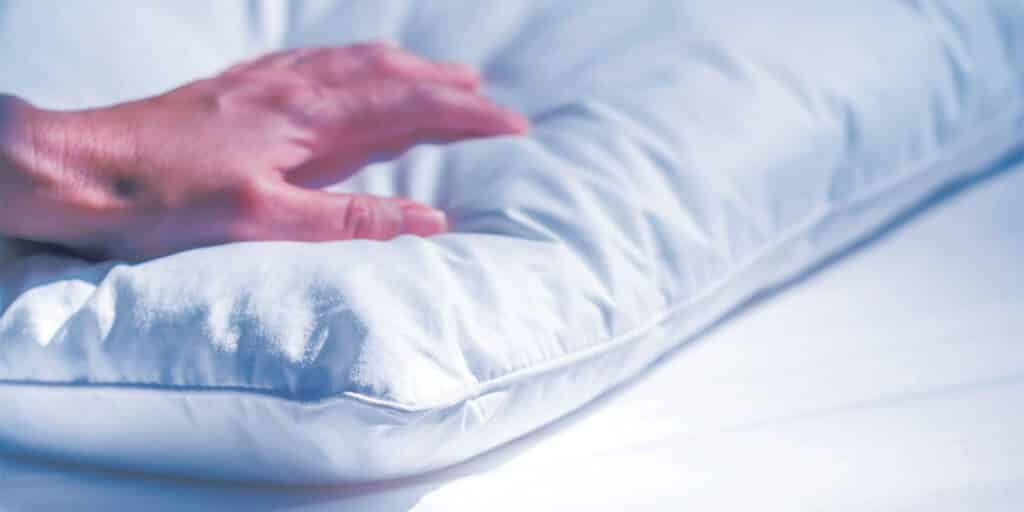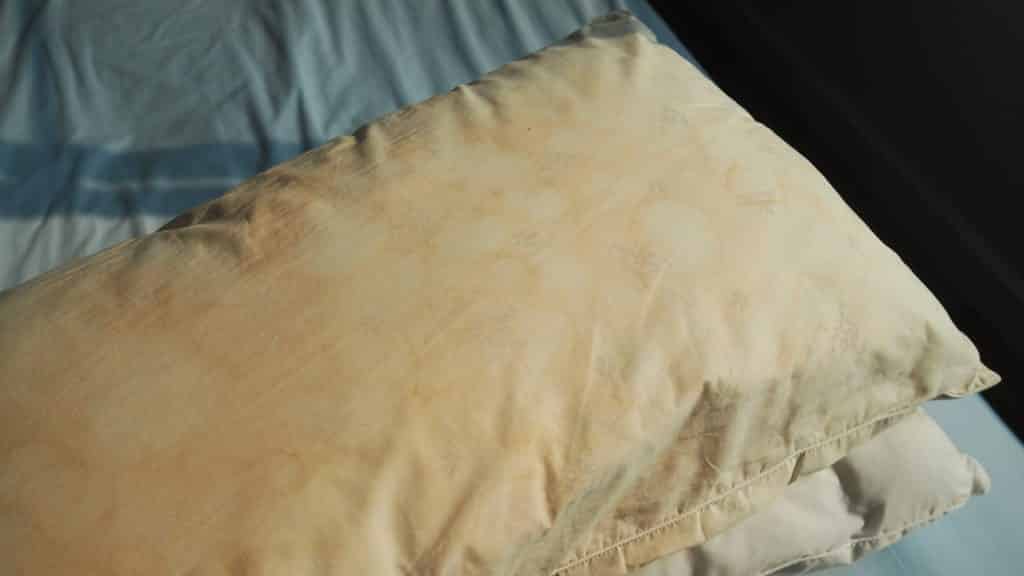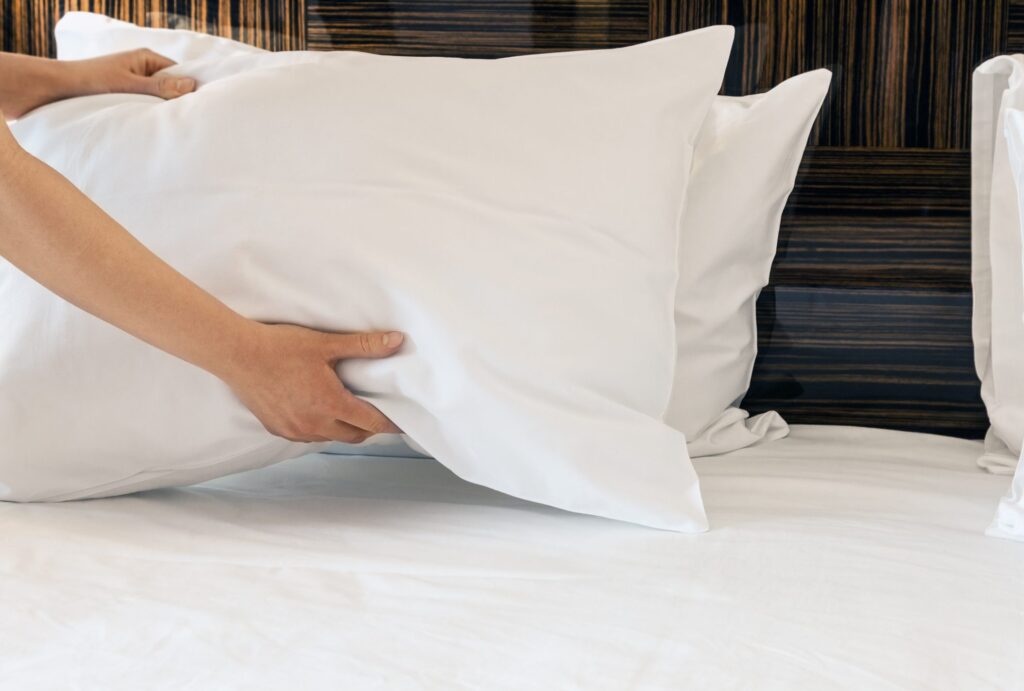
While there are no hard and fast rules for pillow care, there are a few general guidelines you can follow. These will vary depending on the shape and material of your pillow, and you should always check the label on your pillow to see if there are any specific manufacturer guidelines.
How often should you buy new pillows?
How long your pillows last will depend on the material and how well you look after them. A standard, inexpensive polyester pillow should be replaced every 6–12 months, while other materials can last much longer. Cotton, wool and down pillows can last anywhere from 3–5 years, for example, while memory foam and latex pillows typically last up to 5 years.
Investing in a more luxurious pillow doesn’t just mean a more comfortable night’s sleep; you will also save money in the long run by not having to replace them as often.
How can you tell if you need to replace your pillows?
One standard test is to fold your pillow in half (if it’s not a foam pillow) and let it go. If the pillow doesn’t spring back to a flat position, then it’s time to move on to a new one. Other signs can be stains that won’t come off with washing and if the pillow has become lumpy or broken up inside.

In order to prolong the life of your pillow, aim to do the following:
- Wash your pillows on a regular basis
- Air them out once a week to expose them to fresh air and sunlight — this helps to kill germs and reduce odours
- Keep them in pillowcases and pillow protectors
Washing tips for your pillows
Up to 10% of your pillow’s weight may be made up of dead skin cells, bed bugs and dust mites. While this is an unpleasant thought, it can also be harmful to people with serious allergies and conditions like asthma. If you often wake up in the night sneezing or reaching for your inhaler, then your pillow could be the cause.
In order to wash your pillow properly, check the label to see if it’s machine washable or not. If it is, then here are some basic guidelines for you to follow:
- Wash every 3–6 months on the hot water setting
- Use the gentle cycle
- Use mild liquid detergent; avoid fabric softeners
- Run them through a second time on the rinse cycle without detergent
It’s a good idea to wash two pillows at once so the washing machine stays balanced and cleans them equally. Machines without agitators are best, as the agitator can damage the pillow.
If your pillow is not machine washable, then you may be able to hand wash it. For hand washing pillows, the following guidelines are helpful:
- Submerge the pillow in lukewarm water with mild detergent and gently squeeze
- Using cool water, rinse using the same method
- Gently squeeze out excess water
Drying your pillows after washing
Whichever method is best suited to washing your pillow, you ought to make sure you dry it properly afterwards. Avoid hanging it to dry as this will cause it to become misshapen. It is best to leave your pillow to air-dry on a flat surface, either outside in the shade or in a cool, dry room inside.
Some pillows may be able to go in the dryer, but please check the label before taking this step (some pillows can be damaged by a dryer). If you do use this method, keep it on a low heat and check it regularly to fluff the pillows back into shape.

How often should you change your pillowcase?
Your pillowcases help to absorb some of the sweat, skin cells and dust that collect on the surface of your pillow. This helps to increase the amount of time between washes as well as prolonging the overall life of the pillow. We recommend washing your pillowcases at least once a week.
You can also invest in a pillow protector for even tougher protection. These are usually placed between the pillow and the standard pillowcase, zipping up around the pillow. This blocks even more absorption and is great for anyone with allergies. They should be washed regularly with your bedding.
Proper pillow care can do wonders for your sleep, which affects your energy levels, stress levels, productivity and much more. Take care of yourself by taking care of your pillows, but remember to always check the label and the manufacturer’s guidelines first.

